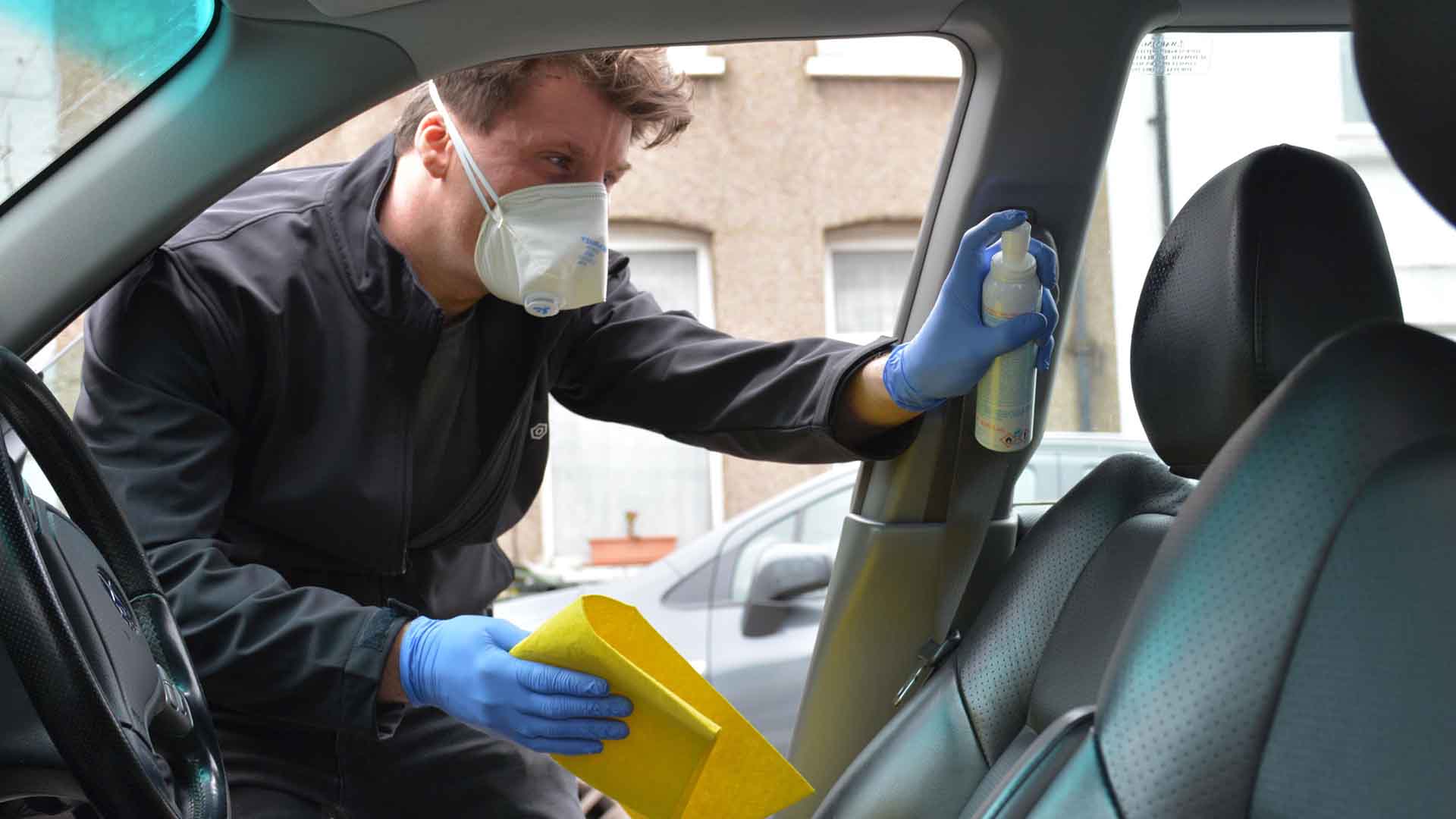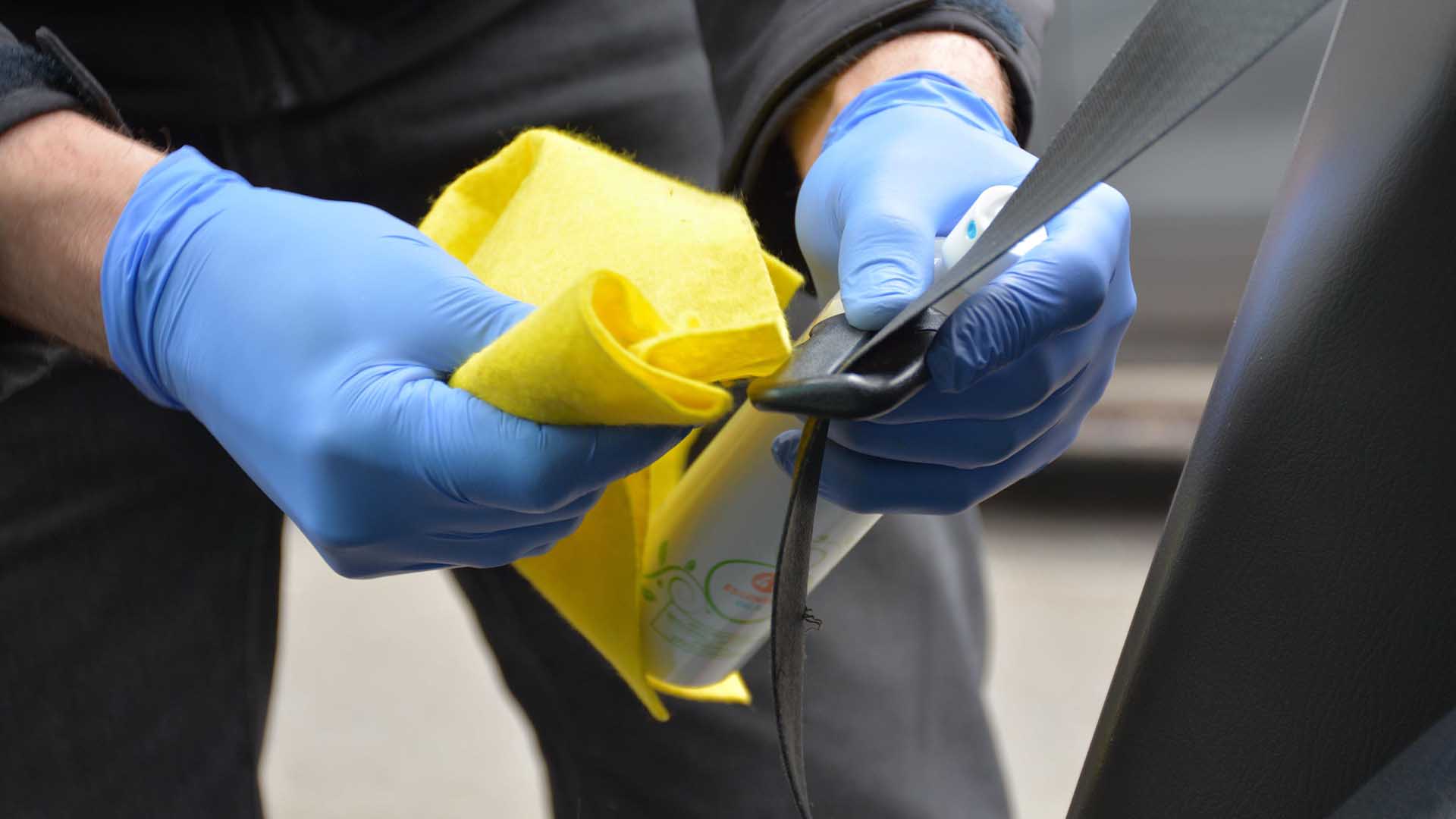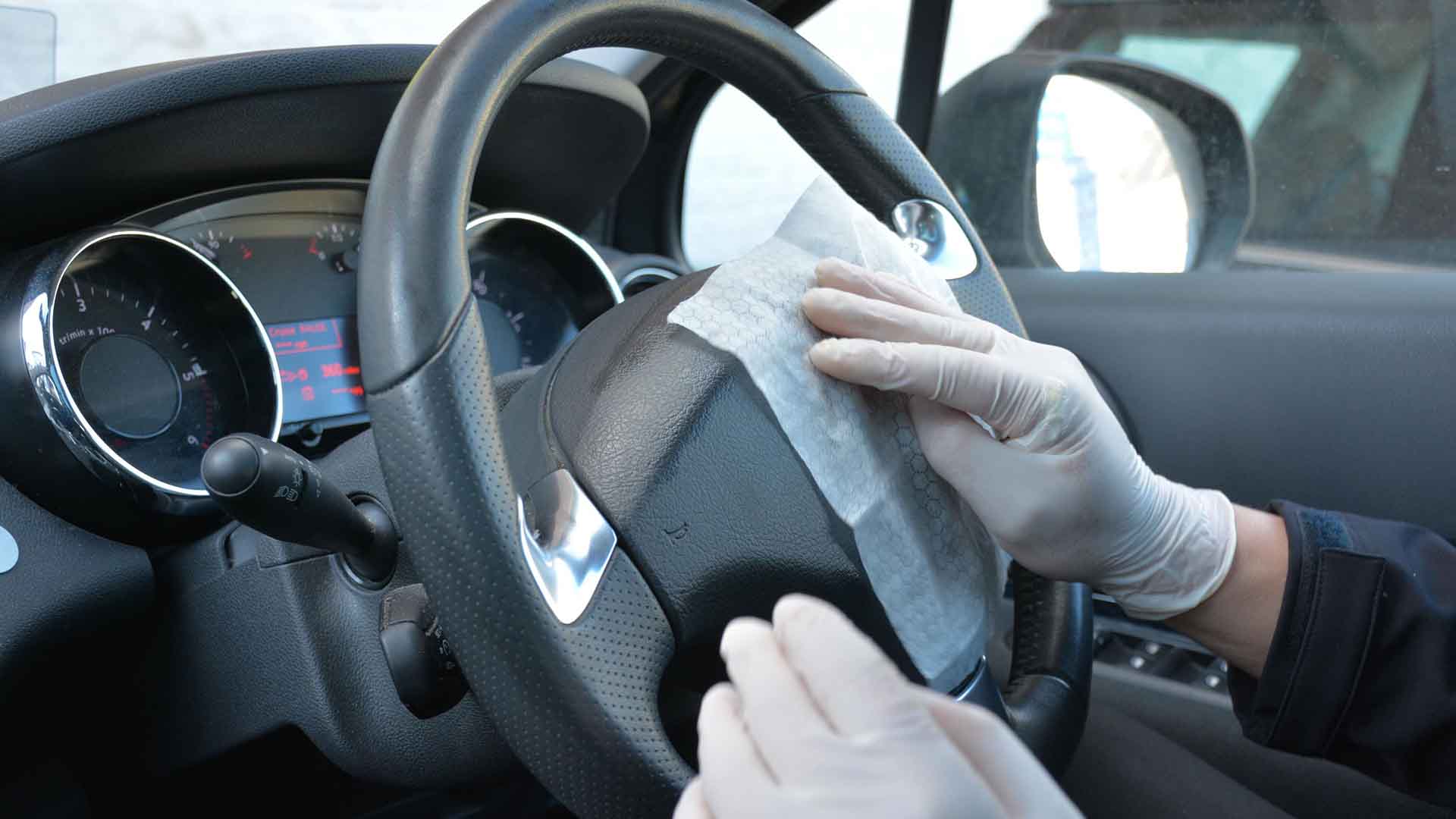
Keeping your car sanitised is especially beneficial during the winter months, when viruses such as Covid and flu are more widespread. Cleaning your car will reduce the risk of infection, helping keep you and your family safe and well.
In this article, we have put together a list of the key areas to sanitise, both inside and outside the vehicle. You should repeat this process regularly, especially if you are vulnerable to infections or carry a lot of passengers in your car.
For more general advice about cleaning the interior of your car, including removal of food and drink stains, read our separate guide here.
Which parts of the car should I clean?
 These are the areas of your car where bacteria is most likely to accumulate. You should pay them particular attention when cleaning:
These are the areas of your car where bacteria is most likely to accumulate. You should pay them particular attention when cleaning:
- Around the driver – the steering wheel, centre console, levers, buttons, switches and internal door handle
- Around the front passenger – the glove compartment (inside and out), dashboard buttons and internal door handle
- Rear-seat area – cup holders, armrests, switches, cabin lights and internal door handles
- Seat belt clips – an often overlooked area. Parents could unwittingly spread germs by fastening belts for children
- External door handles – the first point of contact with any car. The boot latch is important after a food shop, as many don’t consider the risk of passing germs from a shopping trolley to the car. Handles are also at risk after filling up with fuel. Wear gloves at the pumps or, better still, carry latex gloves in the car
- Engine area – if you have performed any car maintenance, clean the bonnet release, engine bay, oil cap, windscreen fluid cap and oil dipstick
- Boot – internal release, parcel shelf and spare wheel compartment
- Touchscreens – these screens are magnets for grubby fingerprints and germs
- Car keys – these can be rife with dirt and bacteria
Which car cleaning products should I use?

Rubber gloves are an essential part of the car cleaning process. Dispose of them afterwards – and avoid touching your face while cleaning. Many home cleaning products are suitable for the job. However, don’t use bleach as this can damage plastics, vinyl and upholstery inside the car.
Damian Jeffries of car service app Fixter says: “Isopropyl alcohol is one of the best products to use and is widely available. However, Isopropyl alcohol is not suitable for leather seats, so it’s vital to use special leather cleaning products for these.”
Normal soap and water is recommended for cleaning touchscreens, as household glass cleaners can affect the anti-glare coatings. Don’t overdo the water, though, or you could make the car’s interior damp, encouraging misted windows and mould – not to mention electrical issues from water seeping into the dashboard.
ALSO READ:
How to claim compensation for pothole damage to your car